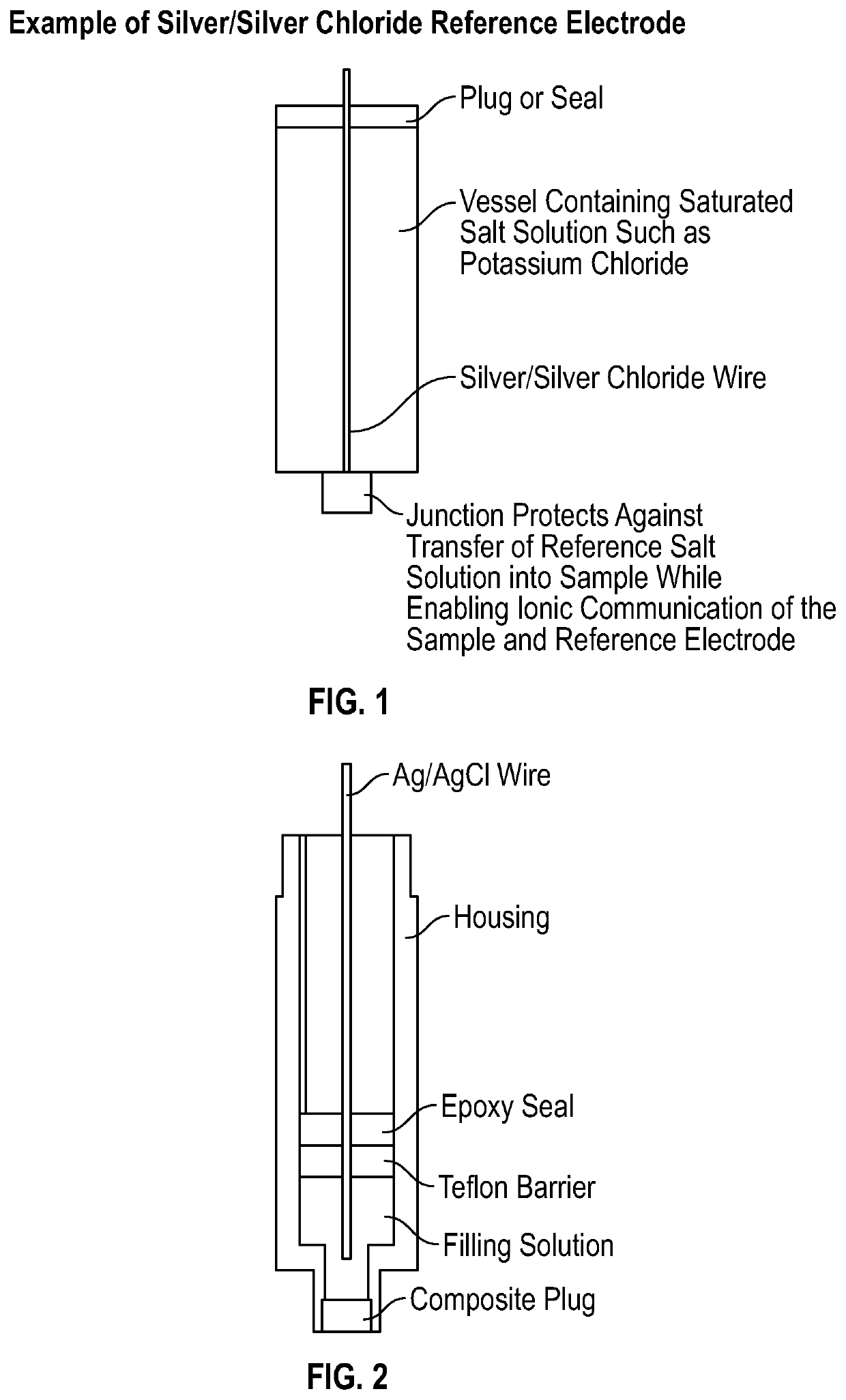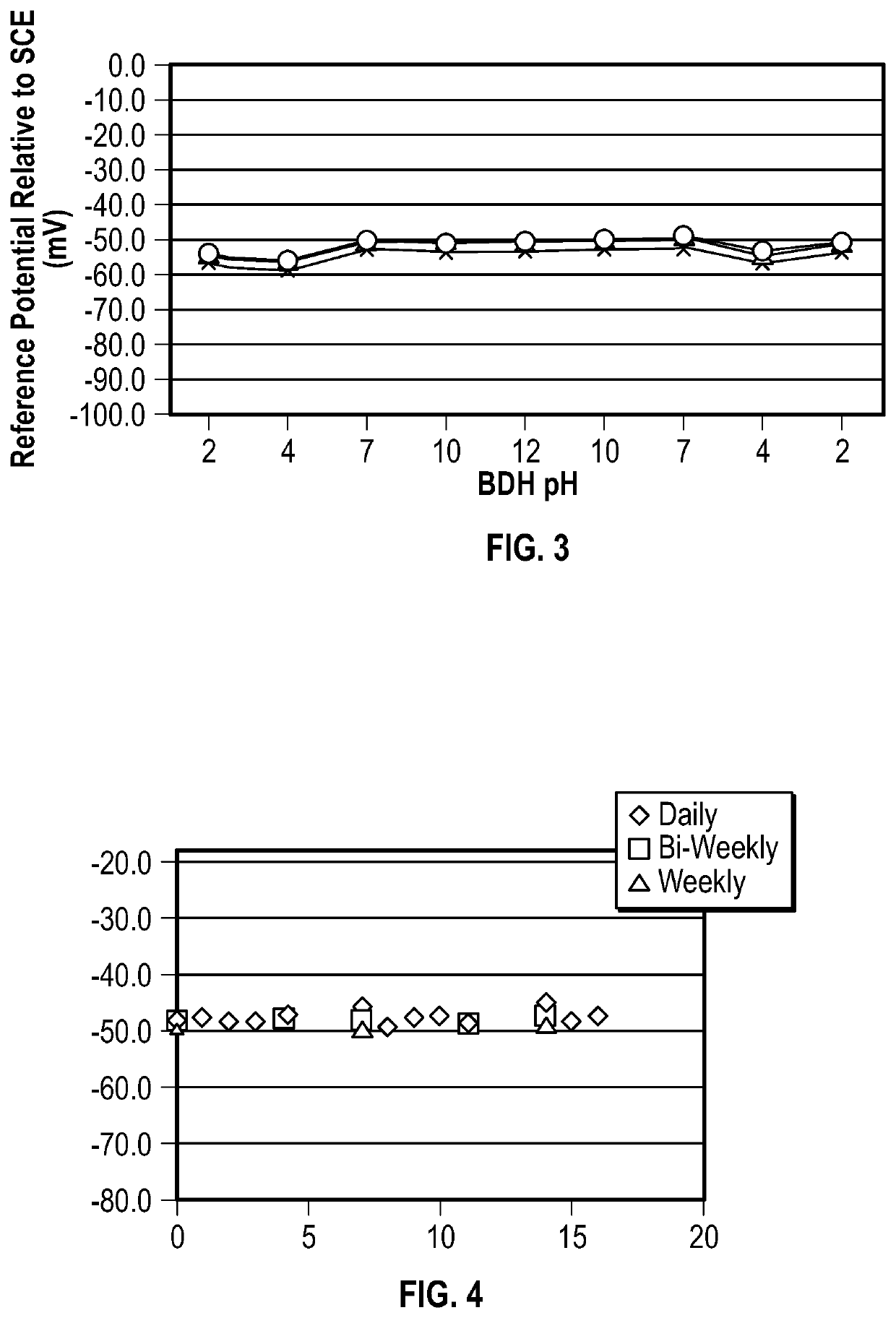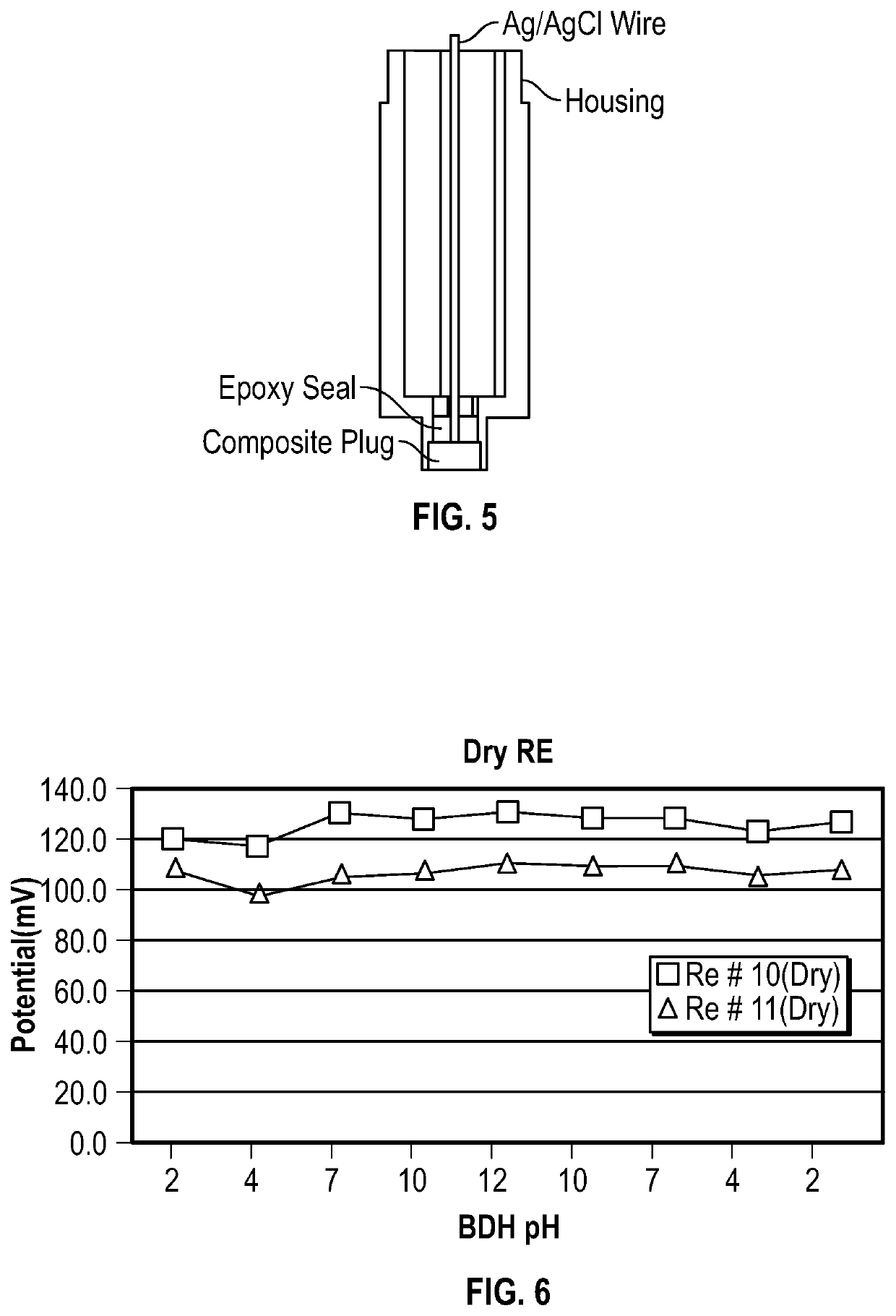pH METER
a technology of ph meter and meter, which is applied in the field of improved analyte sensors, can solve the problems of difficult, insufficient sample contact for semi-solid samples of small volume, and many challenges of glass probes designed for small sample volumes, and achieve the effect of facilitating small gaps and not reducing measurement sensitivity
- Summary
- Abstract
- Description
- Claims
- Application Information
AI Technical Summary
Benefits of technology
Problems solved by technology
Method used
Image
Examples
example 1
[0120]A RAM suitable for use in printing inks and coating formulations for sensor fabrication was synthesized according to the equation provided in Formula I, as follows:
[0121]1,5-dichloroanthraquinone (20 gm, 0.072 moles) was stirred in ethylene glycol (300 mL). To this mixture was added potassium hydroxide pellets (11.8 gm, 85%, 0.179 moles). This reaction was stirred at 120° C. and after approximately 2 hours a dark red solution had formed. Heating was continued for an additional 16 hours. After cooling, the reaction mixture was added to water (800 mL) and this was left at room temperature overnight. The solid which had separated was isolated by filtration and dried. The dried solid was stirred overnight in diethyl ether (500 mL) which dissolved most of the un-reacted starting quinone. The insoluble material was isolated by filtration and dried to give 11.1 gm of crude product. The crude product was stirred in a mixture of methanol and methylene chloride (50 mL of 10% methanol in...
example 2
[0122]A RAM suitable for use in printing inks and coating formulations for sensor fabrication was synthesized according to the equation provided in Formula II, as follows:
[0123]A mixture of 1-chloroanthraquinone (17.5 gm, 0.072 moles) and powdered potassium hydroxide (5.9 gm of 85%, 0.09 moles) was stirred in 1,3-propanediol (200 mL). This mixture was stirred at 120° C. for 24 hours. After cooling, the brown solution was poured into water (500 mL) and after settling overnight, the solids were isolated by filtration. The filter cake was washed with water and air dried. The dried solid was dissolved in methylene chloride (600 mL) and filtered free of insoluble material. The filtrates were dried over magnesium sulfate, filtered and then evaporated under reduced pressure to give a brown solid. A 5 gm sample of the crude, brown solid was dissolved in methylene chloride (20 mL) and this solution was placed on top of a silica column. Un-reacted 1-chloroanthraquinone was eluted using methyl...
example 3
[0124]A RAM suitable for use in printing inks and coating formulations for sensor fabrication was synthesized according to the equation provided in Formula III, as follows:
[0125]A mixture of 1-chloroanthraquinone (15 gm, 0.062 moles) and 2-(2-aminoethoxy)ethanol (105 gm 1.0 moles) was stirred at 90° C. for 16 hours. The hot solution was poured into water (500 mL) and the solids were isolated by filtration. The filter cake was washed with water and air dried. The dried solid was recrystallized from 2-propanol (300 mL) to provide 14.0 gm of product as a red solid.
PUM
| Property | Measurement | Unit |
|---|---|---|
| volumes | aaaaa | aaaaa |
| pH | aaaaa | aaaaa |
| pH | aaaaa | aaaaa |
Abstract
Description
Claims
Application Information
 Login to View More
Login to View More - R&D
- Intellectual Property
- Life Sciences
- Materials
- Tech Scout
- Unparalleled Data Quality
- Higher Quality Content
- 60% Fewer Hallucinations
Browse by: Latest US Patents, China's latest patents, Technical Efficacy Thesaurus, Application Domain, Technology Topic, Popular Technical Reports.
© 2025 PatSnap. All rights reserved.Legal|Privacy policy|Modern Slavery Act Transparency Statement|Sitemap|About US| Contact US: help@patsnap.com



